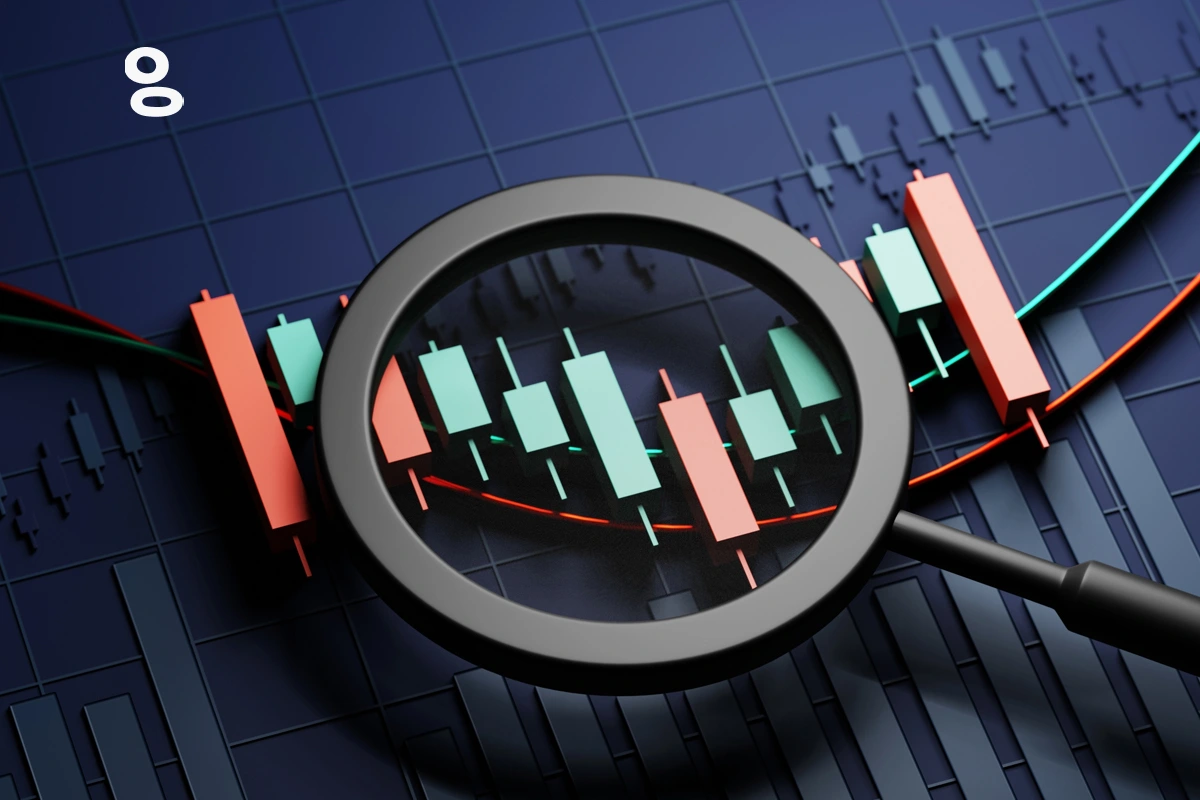Hey there, aspiring forex trader! If you’re stepping into the world of forex, you’re probably buzzing with excitement. You might also be a little overwhelmed by how fast prices move. Once upon a time, forex was a playground for big banks and financial giants. Now, it’s open to folks like you and me. That’s the good news! The not-so-secret challenge? To succeed, you need more than just knowing what EUR/USD means. It’s about mastering market analysis and keeping your risks in check. Don’t worry—this article is your friendly guide to advanced techniques and risk management strategies. It will help you navigate the wild, wonderful world of forex trading and boost your profitability.
- Advanced Technical Analysis: Beyond the Basics
- Combining Indicators for a Stronger Case
- Confluence and Popular Combinations
- The Rate of Change (ROC) and Average True Range (ATR)
- The Elliott Wave Theory
- The Role of Psychological Levels
- The Importance of Backtesting and Combining Analysis
- Advanced Risk Management with Technical Analysis
- Wrapping It Up
Advanced Technical Analysis: Beyond the Basics
Let’s start with technical analysis—the art of reading charts to make sense of the market’s chaos. If you’re new to forex, you probably already know the basics. You might know how to spot a trend or how to draw a support line. But to level up, you need to go deeper. You need to use advanced tools and combine strategies to make more innovative moves.
Your Perfect Trading Strategy
A question I hear a lot is, What’s the best technical analysis strategy for forex? Let’s be real: there’s no one “perfect” strategy. Your best bet is to find a style that fits your trading personality, your comfort with risk, and the current market mood. The trick is blending different tools—like trend-following, momentum, and volatility indicators—to get a complete picture of what’s happening.
Breakout Trading and Confirmation
One strategy that’s a favorite among traders is breakout trading. So, what is breakout trading in forex? Picture this: the market’s been stuck in a tight range, like a coiled spring. Breakout trading is about jumping in when the price finally “breaks out” of that range. This signals the start of a new trend. Sounds exciting, right? But here’s the catch—not every breakout is the real deal. That’s where breakout confirmation comes in. You might be wondering, What is breakout confirmation in forex? It’s about double-checking the breakout with extra clues. You might look for a spike in trading volume or a strong candlestick pattern (think a big, bold candle). For example, if the price blasts through a resistance level with heavy volume, that’s a green light to trust the move and avoid getting tricked by a fake-out.
Trend-following vs. Trend-confirming
Another key idea is understanding the difference between trend-following and trend-confirming tools. You might ask, What’s the difference between trend following and trend confirmation in forex? Think of trend-following tools, like moving averages, as your trusty compass. They show you the market’s direction. Picture a 50-day moving average climbing up, whispering, “Hey, this trend’s looking bullish!” Then, trend-confirming tools like MACD or RSI step in like a wise friend. They double-check if that trend’s got the legs to keep going. Pair them up, and you’re not just guessing at price swings—you’re making bold, confident calls backed by rock-solid signals.
Combining Indicators for a Stronger Case
Once you’ve mastered individual indicators, the next step is to use them together. Think of each indicator as a single piece of evidence. A good detective doesn’t rely on just one clue; they look for multiple clues that all point to the same conclusion. That’s the mindset of an advanced trader. This section will show you how to combine indicators to build a more convincing case for your trades, reducing risk and boosting your confidence.
Confluence and Popular Combinations
Here’s a pro tip: don’t put all your faith in one indicator. Advanced traders mix multiple tools to find what’s called confluence. That’s when several signals point in the same direction, giving you a stronger case for a trade. A popular combo is the RSI and Stochastic Oscillator. Curious about how to combine the RSI and Stochastic indicators in forex? Both are momentum tools, but they work a bit differently. The RSI tracks how fast and strong price moves are. The Stochastic compares a closing price to its range over time. A winning strategy is to wait for both to scream “oversold” (say, RSI below 30 and Stochastic below 20). Then, you look for the Stochastic’s lines to cross upward. That’s like getting a high-five from two friends telling you it’s time to buy.
The Rate of Change (ROC) and Average True Range (ATR)
Then there’s the Rate of Change (ROC) and Average True Range (ATR). Let’s tackle what the ROC indicator is in forex. The ROC is your momentum speedometer. It measures how much the price has changed over a set period. If it’s spiking, a trend reversal or a big move could be coming. So, what about volatility? What’s the Average True Range (ATR) in forex? The ATR is all about volatility. It tells you how much the price typically swings in a given time. It’s not about direction. However, it helps you set realistic stop-losses or gauge if a move is huge. For instance, if the ATR says a currency pair moves 50 pips a day on average, you can use that to avoid setting a stop-loss too tight and getting knocked out by normal market noise.
The Elliott Wave Theory
For those ready to dive into something more advanced, let’s talk about Elliott Wave Theory. Wondering how to trade Elliott Waves in forex? This theory is like reading the market’s psychology through patterns. Elliott Wave Theory says prices move in a calm, repeating rhythm. Five “driving” waves charge forward with the trend, and then three “corrective” waves ease back. It’s powerful stuff, but let’s be honest—it’s like piecing together a puzzle. The pieces can be a bit blurry. You’ll need to dive into studying those wave patterns and get some practice spotting them. They can feel a bit like an art form. But when you get it right, it’s like predicting the market’s next step.
The Role of Psychological Levels
Beyond charts and indicators, there’s a human side to trading—market psychology. Ever wonder how psychological levels affect support and resistance in forex? These are round-number price points, like 1.2000 or 1.3500, that act like magnets for traders. Why? Because tons of buy and sell orders pile up at these levels. This makes them strong support or resistance zones. It’s like a self-fulfilling prophecy—everyone’s watching 1.2000, so the price often stalls or reverses there. Knowing this, you can plan trades around these levels. You’ll expect a bounce or a break. You can then adjust your strategy to ride the wave.
The Importance of Backtesting and Combining Analysis
Before you bet real money, you’ve got to test your strategy. That’s where backtesting comes in. So, what is backtesting in forex technical analysis? It’s like a time machine—you apply your strategy to historical data to see how it would’ve performed. Did it catch significant trends? Did it lose big during choppy markets? Backtesting is your chance to fine-tune your game plan. You can tweak things like indicator settings or entry points to get it just right for live trading. It’s not just about feeling good—it’s about truly understanding what your strategy’s great at and where it might trip up.
Combining Technical and Fundamental Analysis
While technical analysis is your bread and butter, don’t sleep on fundamental analysis. So, how do you combine them? Think of fundamentals as the big-picture story. A strong jobs report, for example, might boost the US dollar. You use that to pick a direction (say, shorting EUR/USD). Then you lean on technicals to perfectly time your entry. You might wait for an RSI signal or a breakout. This powerful combo lets you ride long-term trends with sharper, more precise entries.
Forex vs. Stocks
A question that often comes up is, Is technical analysis more useful in forex than in stocks? Many traders say yes, and for a good reason. Forex is like a massive, flowing river—super liquid and moved by significant forces like interest rates. These are usually easier to predict than a single company’s earnings report shaking up a stock. That huge trading volume means price moves are a clear reflection of what the market’s feeling. This makes your technical patterns and indicators even more trustworthy.
Advanced Risk Management with Technical Analysis
Here’s the golden rule of trading: no matter how excellent your strategy, risk management is what keeps you in the game. So, how do you manage risk using technical analysis in forex? It’s not just about finding the perfect entry—it’s about protecting your capital. That starts with smart stop-losses and position sizing.
Setting Stops and Trailing Stops
Wondering how to set a stop-loss based on technical analysis? One solid method is placing your stop below a recent swing low for a buy trade or above a swing high for a sell trade. This way, if the market turns against you and breaks a key level, you’re out with a controlled loss. Another trick is using the ATR. For instance, you might set your stop at 1.5 or 2 times the ATR from your entry price. If the ATR is 40 pips, a 60-pip stop gives you enough breathing room for normal market swings. This way, you don’t get stopped out too soon.
For trades going your way, how do you use trailing stops with technical analysis in forex? A trailing stop is like a safety net that moves with the price. It locks in your profits while letting the trade run. A technical approach might be to shift your stop to the latest swing low as the price climbs in a buy trade. For instance, if you’re long on GBP/USD and it’s rallying, move your stop to each new support level. This keeps your profits safe while giving the trade room to grow.
Wrapping It Up
Going from a forex newbie to a confident trader isn’t about cramming indicators or chart patterns into your brain. It’s about weaving together slick strategies like breakout trading, Elliott Waves, or pairing RSI with Stochastic to get how the market ticks. You do this all while keeping your risk management game tight. But none of that works without a plan to protect your capital. By using technical analysis to set smart stop-losses and trailing stops, you’re not just trading—you’re trading with purpose. You’ll be ready to handle the market’s ups and downs. So, dive in, test your strategies, and trade smarter. You’ve got this!







